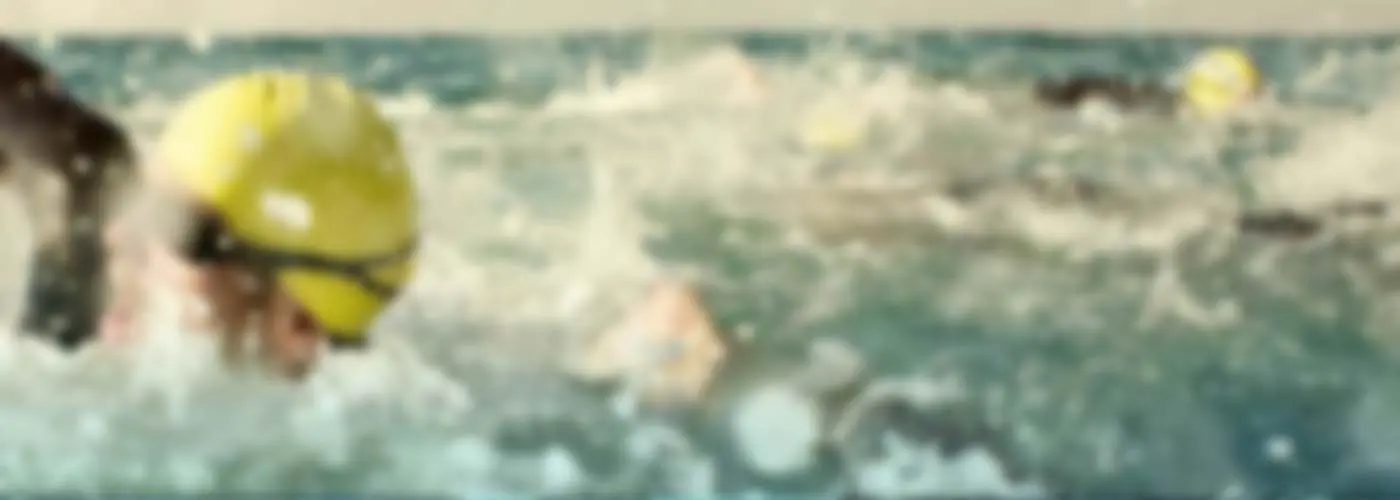“I want to swim like that,” you think to yourself. Sadly, this style of freestyle is both inefficient and ineffective for the open water.
*Cue the WOMP WOMP sound effect.*
Perhaps the most profound differentiator between pool and open water swimming is tempo. How quickly can you turn over your arms is a critical consideration when approaching the open water.
The Higher the Better?
1 of 4
With the dynamic nature and movement of the ocean, a higher stroke rate is often helpful to maintain momentum. While this likely means working towards a higher cadence than you're used to during pool workouts, the higher the cadence is not always better. The key is to find a smooth, locomotive turnover without hesitation or hitches in your stroke cycle. Let's break down each mechanical focus that will allow you to dial into your ideal stroke rate for open water.
The first aspect of your stroke you will want to address is the timing in which you begin your breath. A late-timed breath—one of the most common mechanical errors—will subsequently cause any other timing issue that exists in your stroke.
Imagine pairing the extension of your arms with the inhale and exhale. For a left side breath, the right arm should drive forward as your head and body roll to the side. The moment you reach full extension with the right arm is synonymous with the beginning of the inhale. Most commonly, a swimmer will extend the right arm and begin pressing downward on the water, causing the head to turn late. While this may not seem all that costly, it creates a lot of drag profile from the dropped right arm, loss of balance without the arm extended, slower stroke rate and a shorter window of time for the breath.
The thing I've found most effective is to assign the breath to the arms. Again, for a left side breath your right arm is your inhale arm and your left arm is your exhale arm. In your head say inhale and exhale as each arm reaches full extension to help create the necessary sync of each movement and allow maximum time for each breath, without delay or asymmetry from one side to the other.
Additionally, as your mind stays busy and focused on the singular task of the inhale and exhale, you're able to simplify the overall swimming equation and keep the mind from wandering. This is particularly helpful in the open water when your mind is more prone to listen to any negative self-talk or race day nerves you may have.
Find:
Your Next RacePerfect Practice Makes Perfect
2 of 4
Now that we know it's paramount to maintain a steady tempo and time the freestyle movements together, it's time to put it into practice. This will pay bigger returns than any other mechanical focus for an open water swimmer.
To help, consider getting a water metronome. The Finis Tempo Trainer is arguably the best $40 investment you'll make towards your swimming success. Set the device to mode 3 to beep at the strokes per minute rate you choose. For example, if you set the metronome to 60, that means 60 strokes per minute or 30 full stroke cycles—30 left and 30 right. To get back to your focus, utilize the beep to sync the extension of the arm with the timing of the breath. Then you will begin to instill rhythm to your stroke. This is the locomotion we want for open water.
While the ultimate goal is to increase your stroke rate beyond how you currently swim, it's important to discern when your cadence is too high. It's incredibly helpful to test out varied tempos at longer efforts, too. With few metrics to work with—time and tempo—rate of perceived effort becomes the critical factor in how well you are maintaining each tempo. If you can swim 100 yards at 80 strokes per minute in 1:20, this may look really great on paper, but if the efficiency and effectiveness of this effort breaks down after subsequent 100s, this tempo is likely too high.
Continue bumping the metronome down in increments of two to find the happy medium of a moderate, maintainable effort and a cadence that feels peppy but not sloppy.
Find:
Your Next RaceHead Above Water?
3 of 4
If you've ever watched water polo, it may be surprising to see the athletes swim with their heads above water. The function for them is of course to be able to see the ball and other players easily, but it can be helpful for triathletes, too, when working on holding a high cadence. With your head above water, your lower body wants to sync, and it become virtually impossible to glide at the front of each stroke.
Use the water polo style as a drill at the start of your workouts. With the chin on the waterline, swim a 25 or 50 peeking forward at your arms as they enter the water for each stroke. In addition to the higher cadence you'll naturally have to carry, you'll also be able to see the hand entry and extension of each stroke—win-win! Follow each water polo drill with the same distance of a moderate effort freestyle. It will likely feel much easier and smoother to hold this clip. It can be helpful to use the tempo trainer during these sets, too, further integrating the new, higher tempo.
Consistency is key here, so commit to slowly working your stroke rate up to your sweet spot, while always staying aware of how you're breathing. Keep your breath relaxed, as always, being sure you're not trying to work with too much air in a shorter period of time.







Discuss This Article